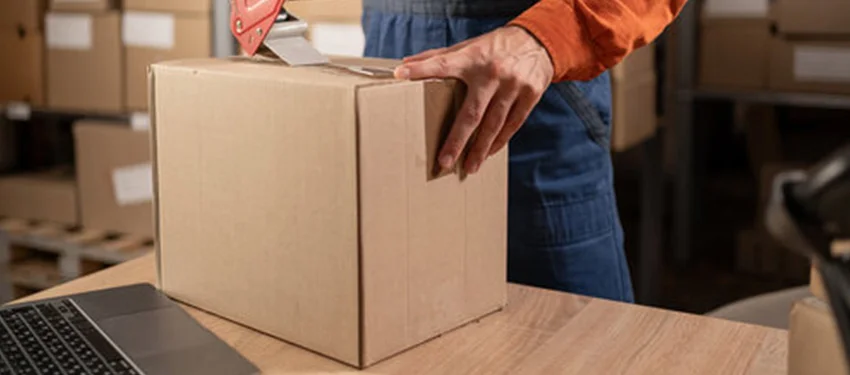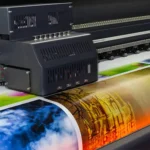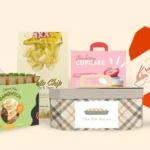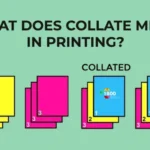Revealing the History of Cardboard Invention – Must Read

Nearly everyone has heard of something called cardboard. We can look around and find the uses of this material around us on a daily basis. Its value is usually overlooked in our industries. Even though it is highly inventive and an essential resource due to its practicality and making. It is very versatile when it comes to the design and delivery market. Especially in the packaging industry. Let’s learn about when was cardboard invented and its properties today.
A Glimpse into the Past: The Origins of Cardboard
Paper creation started in China so the early origins of cardboard began from there as well. The modern version of cardboard was introduced in the 19th century. Edward Allen and Edward Healey from England obtained the patent for corrugated paper in 1856. That is when corrugated paper with fluted or grooved layers was invented. It first served as a protective lining material within hats. It was used to achieve support and improved airflow.
In 1871, Albert Jones from the United States became the first person to get a patent for corrugated paper used in shipping. Industrial packaging took a notable turn when the material appeared on the market. Now to answer when were custom cardboard boxes invented. In 1890, through the scored and slotted box invention created by Robert Gair. That is when mass production and widespread adoption of box construction became possible.
Cardboard and the Environment! Sustainability and Recycling
Cardboard is heavily used in packaging. It is not only highly customizable but also has several other attributes. That is way above its basic packaging function. Here are a few of the basic questions answered.
-
Is Cardboard a Good Insulator
The thermal insulation abilities of cardboard fall within the standard range. The trapped air in the corrugated structures slows the transfer of thermal energy. It functions as a temporary element for building insulation applications. This is very useful in protecting temperature-sensitive contents.
-
Is Cardboard Paper?
The material composition of cardboard consists of paper elements. Manufactured by wood fiber processing just like paper structures, it contains pulp from wood resources. Cardboard exists as a robust material because of its stacked layers. It is made up of combining a center ridge called corrugated flutes between sheets of liner board.
-
Is Cardboard Compostable?
Yes, cardboard is compostable. When located inside compost piles cardboard naturally decomposes. Providing valuable nutrients to the soil during the process. However, any plastic tape or coating should be removed before composting it.
How Long for Cardboard to Decompose?

Cardboard placed in landfills breaks down from several months up to multiple years. It depends on the presence of oxygen and levels of moisture in the environment. Although a compost pile decomposes the cardboard within a few months.
-
Can You Recycle Wet Cardboard?
Cardboard is recyclable but it changes when it remains slightly damp for too long. Too much moisture in cardboard damages its fibers. It becomes difficult to turn into processing materials after that. The excessive wetness makes it unable to be recycled.
-
What is Soiled Cardboard?
When cardboard comes into contact with food waste, oil, or grease then it is called a Soiled cardboard. The contaminants prevent it from being recyclable. Throwing soiled cardboard in the trash represents the best disposal option. Environmental awareness has grown for the better in our times. Cardboard recycling efficiency is a key point in its evaluation. It is one of the most recycled materials. The recycling process removes waste from landfills and preserves natural resources. It takes more energy to build a new material from scratch, recycling cardboard also saves up on that.
Cardboard Engineering Beyond Simple Boxes
Cardboard is not just a basic boring material used for traditional packaging. It is used in various creative ways. From artists to furniture makers and engineers, it is frequently used to design their works. Corrugated cardboard maintains structural resistance to build refined shapes. Engineers use it to make models and prototypes on a 1:1 scale. The process is called cardboard engineering. It is great for checking structural integrity. The sturdy nature of cardboard combined with its lightweight make it perfect for the task.
-
The Sizing Of Cardboard Boxes
The size dimension market includes standard applications of cardboard packaging across diverse industries. The sizes of cardboard boxes range from small to large according to the requirements. Two of the most used sizes are as follows. 24 x 24 x 24 cardboard boxes are appropriate for sending home accessories along with appliances and electronics. The quantities along with its ease of handling form its ideal balance. Larger 36 x 36 x 36 cardboard boxes function well for shipping heavy loads and furniture along with large appliances. The custom printed boxes offer both sufficient internal volume as well as solid framework. They are good to support heavy things.
Conclusion
Hat liners marked the origin point on cardboard. It led to its widespread applications throughout modern times. Due to its versatility, looks like it is going to stay in the future as well. Due to its sturdy and inexpensive nature, it is all around us in our daily activities. On top of that it is eco friendly as well. Even now, technological progress drives new developments in cardboard manufacturing. They yield innovative forms for the material and advanced recycling techniques to make it more efficient. It is guaranteed to stay useful in coming eras. If you are looking for high quality cardboard packaging then contact us at Boxit Packages. We are an expert in the field and provide free design assistance and delivery services all around the USA and Canada.



.jpg)